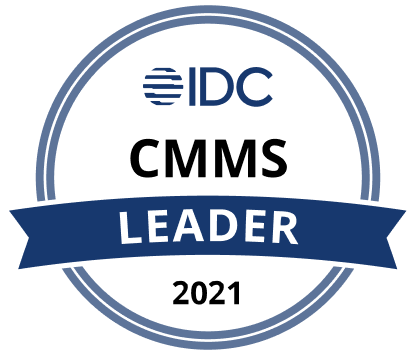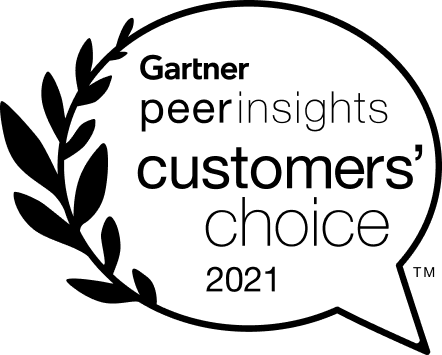What Is EAM (Enterprise Asset Management)?
Are you struggling to coordinate and optimize the work of your first-line technicians—resulting in costly downtime, inefficient workflows, and diminished asset life cycles?
If so, you've come to the right place.
In this guide, you'll discover all you need to know about enterprise asset management (EAM)—the modern practice of maximizing your company's assets for a more cost-effective operation—so you can reduce equipment downtime, streamline maintenance operations, and boost ROI.

What Is Enterprise Asset Management?
Enterprise asset management (EAM) is the combination of processes, software, and services a company uses to maintain its physical equipment. The goal of an EAM practice is to help maintenance teams maximize their assets for a more cost-effective operation—increasing equipment uptime, reducing unnecessary downtime, optimizing maintenance operations, and extending equipment lifetime.
Modern companies make EAM processes more effective by using devices connected to the internet—or industrial internet of things (IIoT) devices. These tools, paired with AI and advanced analytics, collect data from connected equipment to help track and better understand each asset's health, quality, and needs.
With or without IIoT, EAM tools were born out of a need to manage and maximize the total cost of ownership of a company's assets more efficiently. Businesses traditionally used other systems (e.g., CMMS, MRP, ERP, etc.) to address production and manufacturing issues. But these tools lacked the holistic capabilities of an EAM, which can manage an entire asset lifecycle from acquisition to decommissioning.
What Is the Difference Between EAM and CMMS?
Some operators conflate computerized maintenance management systems (CMMS) with EAM systems, but the two offer different capabilities.
A CMMS—also known as maintenance management or asset management software—is a technology that stores data about maintenance operations, such as maintenance performed on equipment, machinery, and other assets.
Companies may use a CMMS to record and organize asset data, plan preventive maintenance tasks, generate reports, and support work order execution.
EAM systems, on the other hand, help maintenance teams shift from a reactive approach to one that's more proactive—and thus more cost-effective—because EAMs focus on the entire lifecycle of physical assets. This software also includes supply chain and work management capabilities, so teams can better plan, track, execute, manage, and optimize their materials and assets.
While a CMMS can help an organization optimize and automate its maintenance management process, an EAM system directly addresses asset performance to extend each piece of equipment's lifetime and overall value.
Why Is EAM Important?
Organizations have hundreds (if not thousands) of assets, including manufacturing equipment, transportation fleets, pipelines, and machinery, to name a few. Maintenance teams must maintain these investments correctly to extend asset lifetime and maximize value.
This supervision involves tracking and managing numerous moving pieces throughout each asset's life cycle. Teams that lack the proper tools and processes often struggle to maintain their efficiency, productivity, and the quality and dependability of their equipment.
That's where EAM comes in, as it eliminates the complexity surrounding asset maintenance operations. The right EAM solution can help an organization:
Monitor assets intelligently: EAM software gathers data from various sources to provide better alerts and enables faster, smarter decisions. Technicians can easily access the status of each asset through AI-driven monitoring, so they always have the most up-to-date information about equipment.
Centralize asset data: An effective EAM solution centralizes all assets' critical data (like location, status, previous maintenance history, etc.) in a single, easily accessible place, helping maintenance managers and technicians optimize—and even automate—their workflows.
Resolve issues before they happen: Instead of facing constant break/fix scenarios, EAM solutions enable teams to stay on top of preventive equipment maintenance, allowing them to fix issues before they become more prominent, costly breakdowns.
Maximize asset utilization: IIoT devices paired with robust analytics tools offer better data accessibility with real-time data on the health and quality of assets, so technicians can better understand and execute the maintenance tasks that extend equipment lifetime and value.
Manage aging assets and infrastructure: Because EAM software offers an in-depth, unified view of operational data, teams can make smarter business decisions surrounding risk management and investment strategies.
These essential benefits directly result from the sophisticated capabilities that modern EAM solutions provide. It's no wonder market researchers expect the EAM market to reach 5.5 billion USD by 2026.
Key Functions of EAM
As with any critical software, it’s crucial to remember that not all EAM solutions are built equally. When evaluating different maintenance tools, be sure to invest in a solution that offers these critical functions:
1. Work management
Your EAM system should track and diagnose work orders, analyze what your team will need to execute work orders, and share this information with the proper individuals for efficient maintenance performance.
It should also track schedules, the team members involved in each work order, and the progress of each maintenance activity so nothing falls through the cracks.
2. Maintenance, repair, and operations (MRO) management
Effective MRO helps organizations reduce expenses and downtime while improving safety, efficiency, and their bottom line. A robust EAM system supports a successful MRO practice by providing total visibility into procurement, costs, and inventory management.
3. Safety
Health, safety, and environmental concerns are top-of-mind for maintenance teams, and EAM systems help reduce risks in each area. An EAM enables proper documentation, reporting, practical incident analysis, and change management.
4. Analytics
AI-driven analytics help organizations gain deeper insights into their maintenance operations so they can make informed decisions that improve productivity, asset value, and, ultimately, revenue. Some EAM systems even offer analytics that enable teams to automate their planning, scheduling, and work management processes, reducing time-consuming, error-prone manual tasks.
5. Supply chain management
The optimal EAM tool should integrate with your company’s supply chain management systems so all teams have up-to-date information regarding equipment, materials, and the overall supply chain.
6. Mobility
EAM systems that offer mobility extend an organization's connectivity, collaboration, and productivity. Technicians can collect and access asset information on their mobile devices (even without an internet connection), execute their work through a single mobile app, and streamline their processes in one central system. This ease of use means fewer issues with duplicate or out-of-date information and fewer operational bottlenecks hindering productivity.
7. Asset lifecycle management
EAM solutions track each asset and its relevant data along the entire asset lifecycle, storing it in a centralized location for prompt reporting and analysis.
8. Labor management
With an EAM, you can track the work of every employee and contractor within the system so you can quickly assess their progress and performance.
9. Financial management
Because EAM software can analyze work orders, downtime and production costs, emergency breakdowns, and predictive maintenance, teams can better plan their budgetary needs ahead of time.
Industry Applications
Since EAM software is so robust, it can empower teams in many industries, including:
Energy and utilities: Energy and utility companies must find ways to increase reliability, manage downtime, handle complex scheduling, and offer competitive service costs—all while maintaining regulatory compliance. EAM systems help these companies automate and streamline their asset management for a more productive, regulated, and data-driven operation.
Manufacturing: Meeting production and safety goals while reducing downtime is a common challenge for manufacturing organizations, but EAM software centralizes everything for maintenance and reliability teams, making it easier for them to reach their goals.
Transportation: Logistics and services teams need detailed information about inventory and assets. EAM systems help them track and manage driver logs, spare parts, fuel management, and other critical data to optimize transportation.
Healthcare: Healthcare organizations must ensure their facilities and equipment are operating reliably to maintain optimal patient outcomes. An EAM solution can help them quickly identify their most effective preventive maintenance tasks to ensure everything continues running as smoothly as possible.
Education: Students and faculty need seamless communication with maintenance staff to maintain the safety of classrooms and residential spaces. The right EAM solution centralizes all maintenance information so technicians can quickly prioritize and execute work orders.
Agriculture: The success of companies in the agriculture industry hinges upon the seasonal readiness of their equipment. EAM systems help them stay ahead of preventive maintenance and crop schedules in one user-friendly, centralized place.
Regardless of industry, organizations should use an EAM solution that helps them manage, control, and optimize the lifetime value of their assets from end to end. The result is a better informed, more productive workforce with support throughout the maintenance management process.
EAM Software Solutions
Asset management strategies and maintenance operations don't have to be a frustrating guessing game for your teams. With the right EAM software solution and implementation, your organization can optimize its processes for a competitive edge.
Companies can execute EAM software in generally two significant ways: a SaaS (cloud-based) solution or an on-premise implementation.
Because SaaS vendors host their software on their servers, they're typically the most cost-effective, flexible option for organizations. They're also easier to scale as a company grows, as businesses can adjust their agreement over time to establish clear objectives and requirements.
It's essential to remember that companies won't find scalable success by merely implementing a CMMS, EAM, or ERP. They need a robust, integrated approach to operations management that employs a centralized ecosystem to bridge the gap between maintenance, reliability, and operations teams.
That's why UpKeep is leading the charge in Asset Operations Management (AOM), a purpose-built, company-wide intelligence EAM solution for driving efficiency and effectiveness across the entire organization.
AOM helps teams manage multi-location, day-to-day maintenance lifecycles, optimize asset utilization, and provide real-time insights into performance data. With AOM, businesses can achieve better outcomes and more significant ROI.
Achieve Successful Asset Operations Management with UpKeep’s EAM
As your organization and the data it generates grows, so do its asset management and maintenance operations challenges. Without the right tools for support, maintenance managers will struggle to supervise, coordinate, and optimize the work of first-line technicians—resulting in costly downtime, inefficient workflows, and diminished asset life cycles.
But by implementing the right EAM solution that focuses on AOM, maintenance, reliability, and operations teams can gain the insights and control they need to maximize their work.
UpKeep’s EAM capabilities offer an easy-to-use tool that ties everything together for a more efficient and effective operation. Grounded in managing asset life cycles, optimizing utilization, uncovering real-time performance data, and even automating preventive maintenance tasks, UpKeep can help your business get a leg up against competitors.
Discover UpKeep’s robust EAM capabilities or schedule a tour today.
Industry-Leading Validation
UpKeep Named Leader in IDC MarketScape for CMMS
UpKeep Rated #1 Leader in Multiple Fall 2021 G2 Categories
UpKeep Named in the Capterra Shortlist Report for CMMS Software
4,000+ COMPANIES RELY ON ASSET OPERATIONS MANAGEMENT
Leading the Way to a Better Future for Maintenance and Reliability


